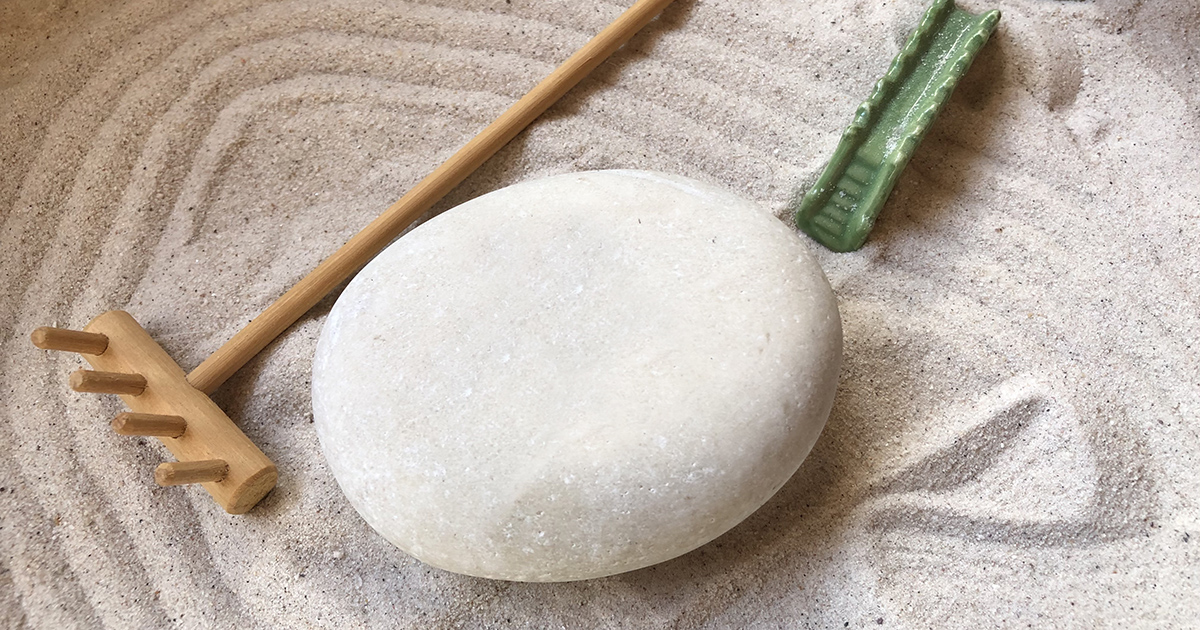Beyond Self-Improvement and Burn-Out

By Alan Sloan
The goal of mindfulness practice is to allow what is inherently positive, already here within us, to shine forth, as opposed to creating a “new and improved” version of ourselves. It is not about self-improvement or fabricating a special, meditative state of mind. It’s not a matter of reaching a higher consciousness, but rather letting the mind truly relax and settle into its naturally open and creative state.

Do we bring to our work and to each moment of our lives a sense of being fully present? Are we sometimes on automatic pilot, just sort of being present, with one foot in the present moment and the other in either the past or future – a kind of inner multi-tasking?
Our discursive mind has a job. It narrates our experiences, like a narrator in a documentary film. It is constantly trying to figure out what’s going on, whether we like something or not, if our experience is threatening, comforting or boring. The discursive mind is simply one of our many human faculties. It’s not a bad thing; it can be a very good thing. But it’s easy for us to become controlled by it. It is like having a very bossy parent or roommate constantly reminding us to improve or succeed, telling us what is right and what is wrong and what we must do next.
When the narrator of our inner experience becomes a heavy-handed dictator, we suffer. We lose confidence in our own intelligence and intuition, and start relying on this over-bearing, critical voice to direct us. It can be a very painful state of mind. There are endless opportunities of being praised or blamed, and endless potential “fixes” insisted upon by this hypercritical part of us. The preoccupation of fixing ourselves, fixing other people or fixing the situations we’re in can become all-consuming. That’s when burn-out can become a real possibility. The desire to bring benefit is not the problem. It’s how we go about it that can cause harm.
Fortunately, mindfulness practice offers an alternative to that claustrophobic, harsh inner world. The practice allows thoughts and emotional reactivity to slow down so that we can “catch our breath” and find more spaciousness within. The more we slow down our mental speediness, the more room there is for self-awareness to naturally arise within us. This awareness is filled with insight and warmth, as well as a sense of wholeness and humour. Each one of us is a whole, complete person, naturally open, receptive and wakeful. When we connect with ourselves in this way, our discursive thoughts can be included in that spaciousness. But the thoughts are no longer in command.
The practice is not aimed at trying to stop thinking. We are not programming or hypnotizing ourselves. There is no attempt to block thoughts. We are just being present and relaxed…so much so that our thoughts also begin to relax on their own, quite naturally. And our busy mind appreciates it. Our mind, after so many years of speeding around, trying to protect us and figure everything out, needs a break, too. However, mindfulness practice is not like a vacation in the sense of just letting the mind go wherever it wants to wander. Rather, it is letting the mind seek a deeper, more fundamental level. At that deeper level, there is sanity, honesty, humour and perspective.
If we think we need to change who we are, to get rid of our anger or negativity or alter our personality, to become more spiritual or evolved, that ambition itself becomes counter-productive. That ambition is giving power back to the dictator, only now our discursive mind is armed with the power of mindfulness practice, and our perfectionism and suffering increases.
Mindfulness practice involves unmasking, taking off layers, rather than putting on additional layers to make us stronger and more secure. It is about making a sane relationship to anger, fear, negativity and confusion, to find a way to work constructively with all of life’s challenging aspects, rather than looking for a magic bullet that will change us into someone invulnerable to suffering.
The goal of mindfulness practice is to encourage what is already here within us, what might be termed our “basic human goodness,” to shine forth. When we give ourselves permission to be what we truly are, our mind can become naturally joyful, awake, caring and clear, looking for ways to be of genuine benefit. We can become kinder, more skillful and brave, connecting with basic goodness in ourselves and in everyone else, as well.
***
Alan Sloan will led our Wayside Foundation Course on Mindfulness in 2021.
Share this:
No Comments
thank you for this blog post Alan. I will most definitely be challenged to sit in the pocket, not run and hide by constantly doing, but rather each day greet who I am, welcome myself and be grateful, remain patient and accepting.
Marge Cafarelli
Santa Barbara
Thank you for your comment on the blog, Marge. I’m glad that you find it useful for your practice. It’s good news to know that we don’t have to embark on a campaign of self-improvement, but rather of gently unmasking, uncovering and connecting to our inherent goodness.
Very insightful, thank you Alan
I really like the concept of not changing oneself, but revealing one’s true self.
Change is the most natural thing in the world if it is not forced. My studies of “flow” both Dao, and in the patterns of ecosystems. When you find balance it allows flow to guide you. Staying in balance is not always easy, but becomes easier with time, patience and practice. Or at least in my own experiences!